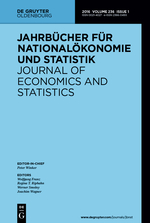SageCite-Project releases interviews with biosciences editors on citing and linking data
Posted: December 5th, 2011 | Author: Sven | Filed under: Projects | Tags: biosciences, Citation, demonstrator, DOI, interviews, journals | 1 Comment » The SageCite project, funded by JISC, is releasing interviews with the editors of two leading journals in the Biosciences. The two interviews explore a large range of issues concerning data, scholarly communications and publishers, the links between data and publications and interoperability between data repositories and publishers.
The SageCite project, funded by JISC, is releasing interviews with the editors of two leading journals in the Biosciences. The two interviews explore a large range of issues concerning data, scholarly communications and publishers, the links between data and publications and interoperability between data repositories and publishers.The project worked through a number of workpackages comprising:
* Review and evaluation of options and approaches for data citation
* Understanding the requirements for citing large-scale network models of disease and compound research obejcts
* Demonstration of a citation-enabled workflow using a linked data approach
* Benefits mapping using the “Keeping Research Data Safe 2” taxonomy
* Technical and policy implications of citation by leading publishers
* Dissemination across communities (bio-informatics and research and information communities)
The results of these workpackages are published here – the project now has concluded.








The other avtandage of Google Scholar (though I think Thompson is now starting to do this, too) is that it includes citations in books. For mathematicians like you, this is probably irrelevant, but for humanities and social science scholars this makes citations a much more reliable and valid indicator of their actual impact. Until recently, only those works cited in journal articles were in the indexes. In disciplines where journal articles are not as common as research monographs this was not very useful at all.Also, I’m laughing about the how many Ghoussoubs can there be (and the fact that you know the others) because there aren’t a lot of VanEvery’s either